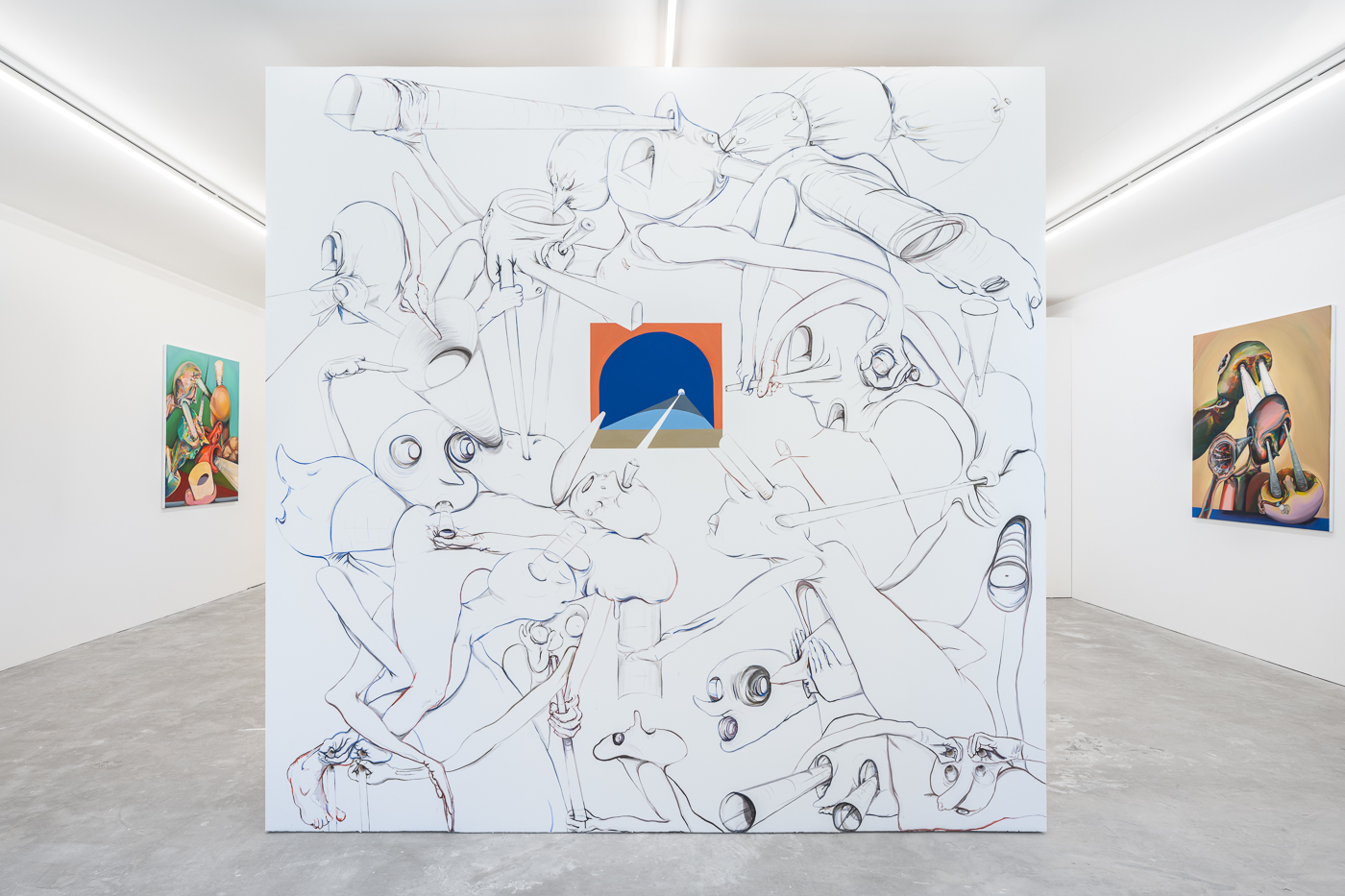


Courtesy of Niru Ratnam, London. Photo: Damian Griffiths
Niru Ratnam, 71 Great Portland St, London W1W 7LP
19 January – 24 February 2024
Last week, Niru Ratnam’s new gallery space on Great Portland Street opened its doors to the public with a solo-show by British painter Emma Cousin.
Her figurative paintings, which often feature surreal and carnivalesque motifs, explore the space between realism, fantasy, and her personal experiences as a woman. Interested in exploring the normative tensions within contemporary society, her fantastical compositions respond to the limitations of language and verbal communication. Tunnel Vision depicts the metaphorical and physical effects of ‘tunnelling’ on the human psyche.
When entering the large gallery space, we are met with Cousin’s fleshy and colourful paintings of intertwined figures, all of which seem to be experiencing the phenomenon of ‘tunnel vision’. According to Cousin, the link between tunnel vision and the act of visual creativity is partly inspired by the “violent comedy” of ‘Road Runner’ in the Warner Bros Looney Tunes Cartoon, where the characters painted a tunnel into existence and passed through it like a magic portal.
When looking closer, the protagonists in Cousin’s paintings appear not only to be experiencing tunnel vision themselves, but also to be manifesting it within their own bodies in grotesque ways: mouths gape open to reveal a dark abyss, elongated eye sockets transform into tubes that bore into other protagonist’s heads, and noses extend out to end with yet another tunnel opening.
In the painting Gnawsea, 2022, we see three contorted figures. The left figure is transfixed by a pair of blue tunnels that look like binoculars, whilst the right gazes back at the viewer with eyes transformed into what looks like the inside of the London Underground tunnels. A similar dynamic is at work in Choncha, 2022, which shows two awkward creatures with white and grey tubular projectiles shooting out from their eyes.
In an accompanying essay, Cousin describes that during her pregnancy and childbirth, she became more aware of how a woman’s body is entirely reliant on a system of tunnels to transport and carry bodily fluids. Picturing the body as a series of caverns and voids, as well as connecting tunnels and passageways, is apparent in works such as Tsog, 2023, where the crown of the figure’s head on the painting’s right side opens to reveal what looks like a cave. Perspective switches from exterior to interior, with the ‘cave’ seemingly extending far beyond where the back of the figure’s head would be.
Overall, Cousin’s uncanny trompe l’oeils draw us into an ambiguous world of labyrinths, pipelines, and passageways - each of which disappear into the darkness. Her protagonists prompt us to reveal the structures of our internal self, offering a distorted anatomical mirror of the human body’s vascular and nervous systems, which paradoxically, we never really get to see. For me, Cousin’s figures, with their awkward interacting tunnel-like body parts, carried out in complex and masterly compositions, explore our reliance on each other as both violent and intimate. They definitively trigger me to look inwards, thinking about the tunnel systems inside my own body.
Christine Takengny
The Roden Senior Curator, Museum Acquisitions
Niru Ratnam
71 Great Portland St, London W1W 7LP
Opening Times: Wednesday – Saturday, 12 – 5pm
Exhibition open until 24 February 2024